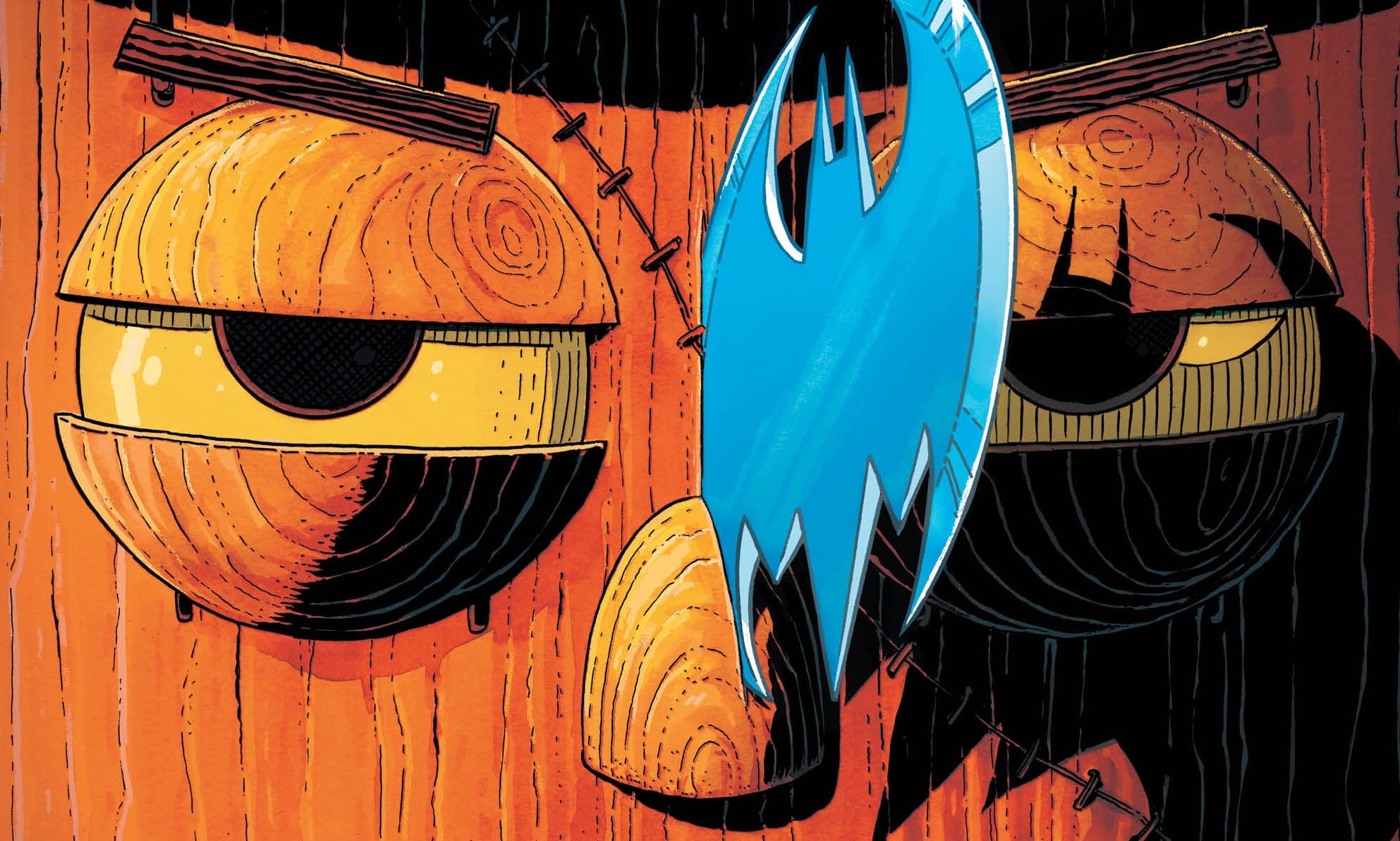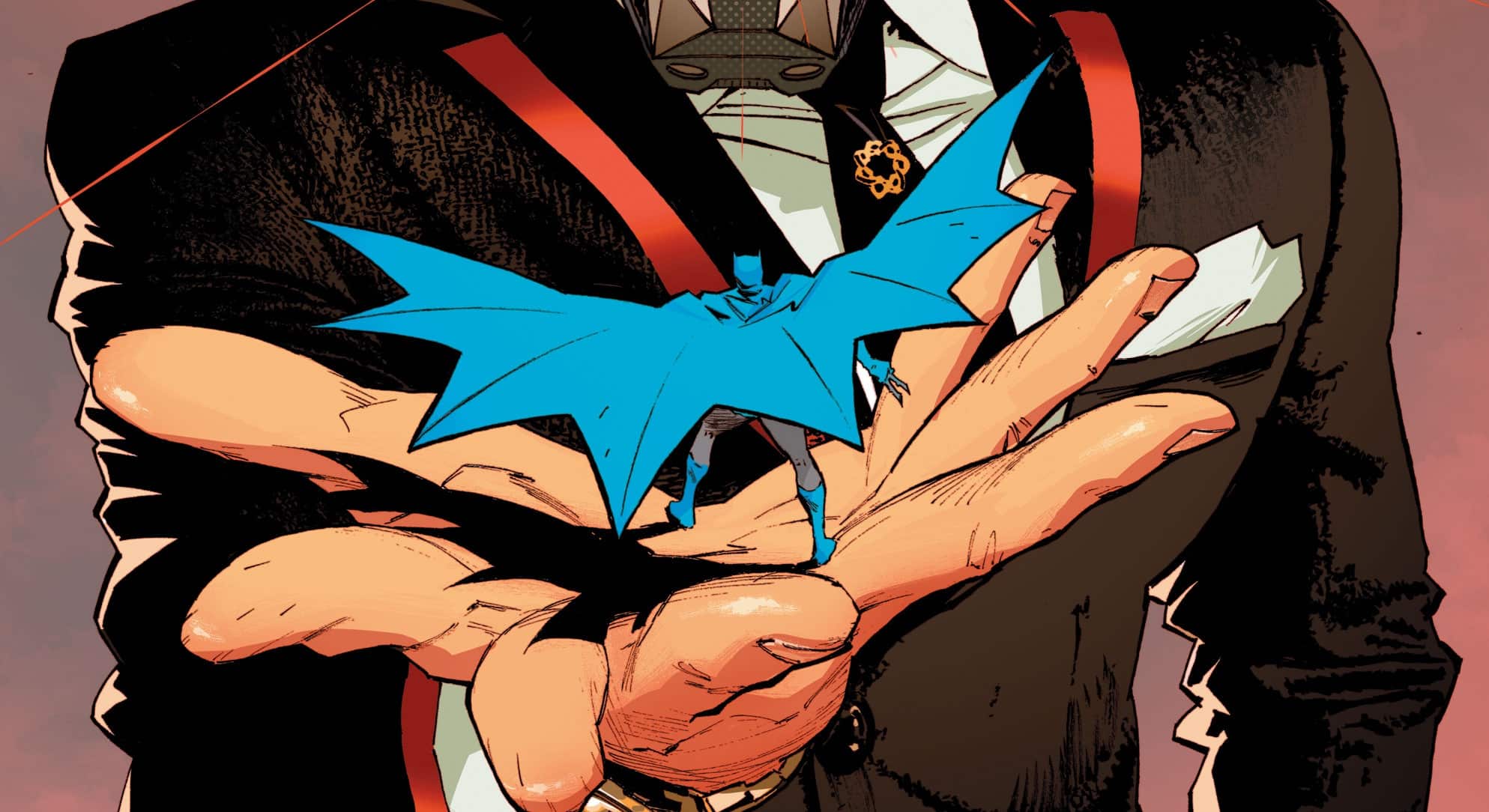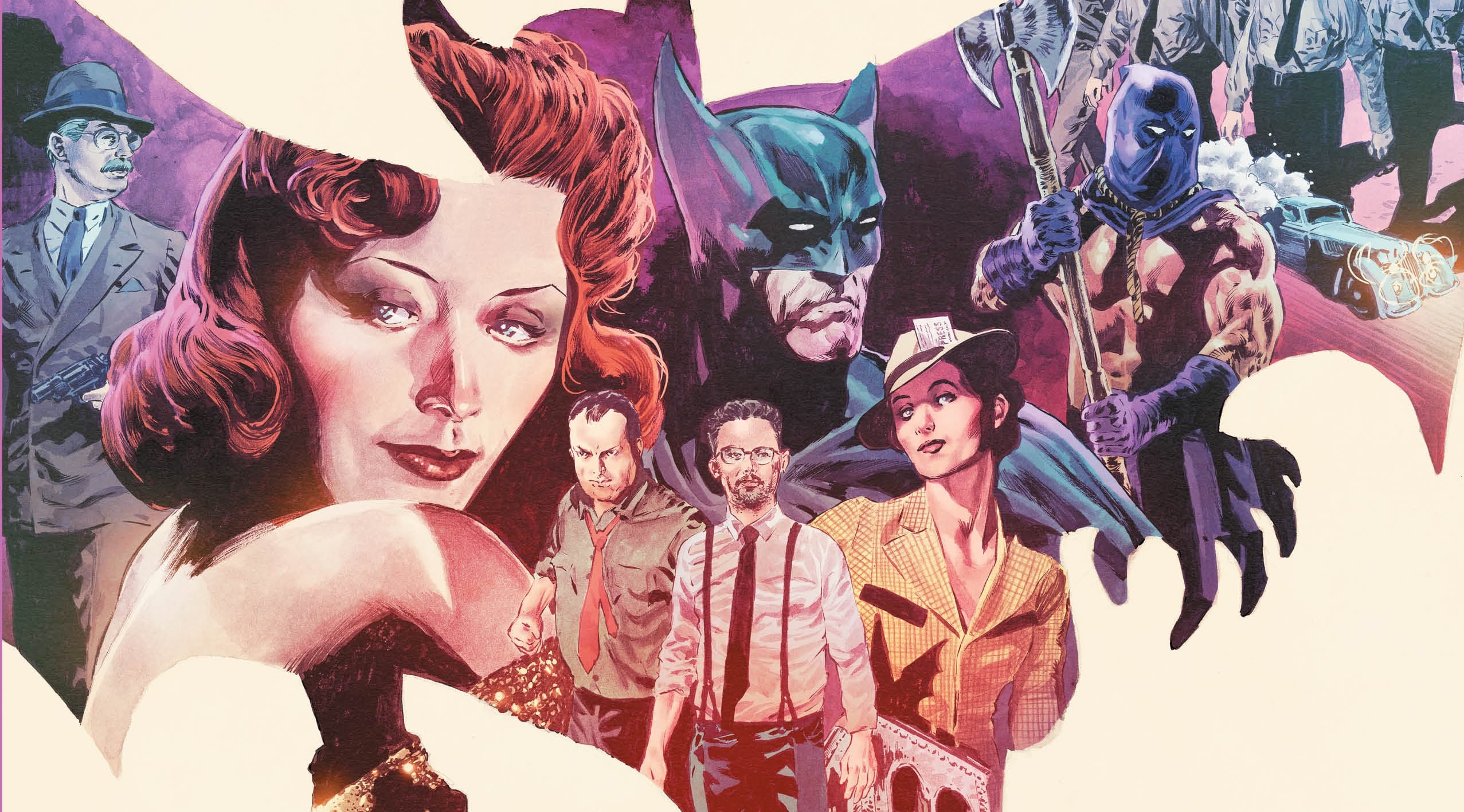Batman learns the details of the origin of the new Ventriloquist, as her plans fall apart and she makes one final, desperate attempt to stop her home from being seized. Batman: Dark Patterns #6 is written by Dan Watters, drawn by Hayden Sherman, colored by Triona Farrell and lettered by Frank Cvetkovic.
Will Nevin: I know he’s not our boy, but how fuckin’ awesome is Super Ice Cream Man?
Matt Lazorwitz: Oh, that is going to be WILD. You’d think those folks would be more inclined to do a Batman story, or something in that Swamp Thing/Constantine corner of the DCU, but them doing Superman just seems like it will be fascinating.
Will: I’m excited to see how crazy kryptonite can get.
City on Fire





Matt: As we reach the end of the second arc of this series, the title is really occurring to me for the first time. We get titles for miniseries, and they are usually just something that sounds cool. But now that we have two of the four arcs under our belt, I think the second word of the title, Dark PATTERNS, is starting to make more sense to me.
Will: Are you searching for commonalities, themes, maybe messages in the signal, Brother
Matt? This is something we touched on last time, but it is very much central here: The people who find themselves doing bad things are often lost and without hope. There is room for pity. There has to be.
Matt: Both of the villains of these two arcs, the Wound Man and the new Ventriloquist, are not evil. They might do bad things, but they aren’t bad people. They are as much victims as anything. Batman villains have this wide spectrum, from the pitiable and tragic, like Two-Face and Animated Series Mr. Freeze, to the purely malevolent, like Black Mask and the better versions of the Joker. I am not usually happy when villains of that latter camp are bent to fit in the former, but these new characters are intentionally victims of the social structures and corporate greed that pervade the modern world, and that is interesting as all get out.
Will: I know, right? They’ve both had noble intentions that got bent for one reason or another. I think this is another thing we’ve touched on, but the new Ventriloquist got a name by the end of this, didn’t she?
Matt: Michelle Rickson. One of the other tenants calls her by her first name at the beginning of the issue, but only after she’s killed her husband, the person who has kept her in shadow all this time. And she is addressed by her full name when it is revealed her body has not been found, which means she’s still out there. Because unless there’s a body, they’re not dead. And frankly, even if there is one, it’s 50/50.
Will: I love the idea to minimize her personhood, to define her in terms of her husband. It really frames her as someone in need of a voice, of an advocate — exactly the sort of person the Ventriloquist/Scarface … helps? Targets? Really gray line, innit?
Matt: It brings us to the inherent question with Scarface: is he actually more than just a puppet? When Alan Grant and John Wagner created him, they left enough ambiguity in whether there is something supernatural about Scarface to let the reader choose. And that makes him a perfect villain for this arc, as we get a similar ambiguity about Bledin Tower by the end. Back in Part 1, I talked about how I wondered about the supernatural, and you, my rational friend, went with the more mundane (I use that in meaning natural, not boring) rationale of acoustics. But each issue has teased out the possibility of there being something else here, and I love that we get no firm answer. Did the woman from last issue hear the ghost of her father’s voice every Thanksgiving? Was Officer Pryce led to safety by the voice of her dead partner? Or are there perfectly rational explanations for all this? We have no answer, and I think that is more than fine, but important.
Will: And what was the glowing room in the last panel? Sometimes it’s better to not have an answer, ya know? I’m really struck by how this issue — like all the others in this series — was gripping from start to finish, not a single wasted moment or panel. And the narrative choice to have Wesker as a silent witness in the building, forcing Batman to deduce what amounted to a heap of exposition? A lesser writer would have made that a slog, a hefty plague of word balloons. But Watters turned that into some gripping shit. Tight and compelling.
Matt: The part of that where we see Wesker sneaking into the Rickson apartment and menacing Michelle’s husband secretly to convince him that Scarface is real is some of the best horror comic illustration I have ever seen. The panel of Wesker under the couch reminds me of a great sequence from one of my favorite horror comics, Nailbiter, that uses a page turn to come as close to a jump scare in a comic as I have ever read. And the rest of that page, as Wesker, usually so small and unassuming, becomes something terrifying and violent, is chilling. Sherman is a master of pacing through layouts, and this is some top-notch work.
Will: As I was reading this, I couldn’t help but to compare it to Injustice: Year Zero, something that you (but not everyone reading this) know we read for the show last night. At its best, the Injustice universe is interesting, maybe even compelling. At its worst, it’s slop plagued by bad art and a dictate that the story continue, regardless of whether there’s another logical chapter to be had. But this? This is craft. Delicious, fuckin’ made with care, top-notch shit. We even got our favorite formaldehyde-sippin’ medical examiner back at the end.
Matt: Watters and Sherman are building a corner of Gotham for this series to inhabit, with its own cast and its own questions. I’m getting a Chekhov’s Two-Face vibe from Dr. Sereika; he is there for a Purpose with a capital P. I’m not sure if it’s villainous, but there is more to this haunted, addicted man. What we have seen of the villains of this series, I would not be surprised if his history has some skeletons. But I might be seeing things that aren’t there; the title of the next arc makes me worried I am.
Will: Getting a little nervous about “Pareidolia,” are we? A murder mystery that ropes in the Red Hood Gang, as the solicitation tells us. Everyone thinks they have a Joker story in them. Is this Watters’ swing?
Matt: I wouldn’t be against it, but I think this is going to be more subtle. I would love a story focused on the people in the gang who didn’t turn into one of Gotham’s premiere villains. There’s a story there of people living in abject fear that their old boss/patsy/whatever could come a-knockin’. Maybe seeing Joker everywhere?
Will: We have a good batting average for this series when it comes to theories, and that’s another good one. And speaking of jokers, Boss Man Dan, can you do an image search for the Pareidolia joker from Balatro and drop it here?

It treats all played cards as face cards. It’s a good visual gag, amirite?
The start of the next arc can’t come soon enough. But that also means we’re one issue closer to the end, which is a terrible thought that I refuse to acknowledge. Chain Watters and Sherman to desks and make them do another 12 issues. I command it.
Matt: We might need to start checking out some of the Watters Nightwing for the column, especially the just completed two issues with Francesco Francavilla art. And we have his story upcoming in Detective Comics #1,100 with the legend Bill Sienkiewicz. I think he’ll be on a main Bat book before too long, if there’s any justice.
Will: He’s proven he gets it. I’m a believer.
Bat-miscellany
- On last week’s BatChat podcast, we read three stories that inspired episodes of Batman ‘66 and watch those very episodes. It’s one of our whackier episodes, and I love it. And this week, we’re joined by Matt McThorn to talk about three Batman annuals, two of which make it into the upper echelons of The Big Board.
Buy Batman: Dark Patterns #6 here. (Disclaimer: As an Amazon Associate, ComicsXF may earn from qualifying purchases.)







